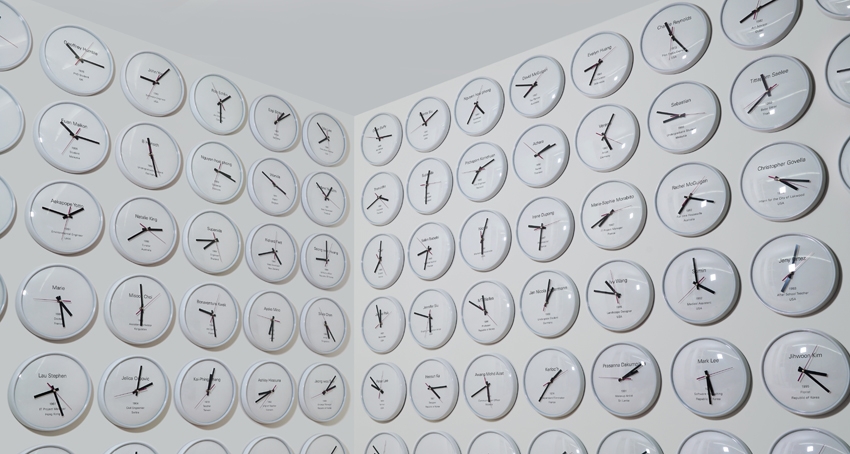ArtReview sent a questionnaire to artists and curators exhibiting in and curating the various national pavilions of the 2017 Venice Biennale, the responses to which will be published daily in the lead-up to the Venice Biennale opening (13 May – 26 November).
Daehyung Lee is the curator of the Korean Pavilion, which includes work by Mr K, Cody Choi and Lee Wan. The pavilion is in the Giardini.
What can you tell us about your exhibition plans for Venice?
The exhibition Counterbalance is structured around three geographical frames – Korea, Asia and the world – and three generations of Koreans. Mr K represents the first generation, Cody Choi the second and Lee Wan the third. Cody Choi represents a generation of Korean artists who, during the 1990s, responded to Western cultural domination through appropriation and parody. On the roof of the pavilion, Venetian Rhapsody creates a dense, glowing forest of neon signage that borrows freely from the visual ambience of casinos in Las Vegas and Macao, and reflects on the spectacle of ‘casino capitalism’ in its most desirous and mediated locales. Lee Wan’s Proper Time presents 670 clocks engraved with the names, birthdates, nationalities and occupations of individuals he interviewed from around the world. Each clock moves at a different rate that is determined by the amount of time the individual in question must work in order to afford a meal. For Counterbalance, Lee presents the story of a deceased journalist, Mr K, through Mr K’s personal archive of 1,412 photographs, which the artist found and purchased for US$50 at an antique market in Korea. Miraculously, the trove had survived Japanese imperialism, the Korean War, years of dictatorship and rapid economic transformation of Korea.
How is making a show for the Venice Biennale different to preparing a ‘normal’ exhibition? Or another biennial?
Although one of many fairs and biennials in the world, the Venice Biennale is perceived by curators and artists as the opportunity of a lifetime and as the culmination of their careers. When two or more artists represent a national pavilion, it becomes hard to avoid discord. So I imagined the following: two aggressive fish in a single tank. How would I keep the fish at peace? It is not the easiest situation to work out. How can I facilitate communication between them while keeping them faithful to their own creative voices? I imagined a different fish tank this time – one with two different chambers connected via thin passages. In this tank, each fish occupies its own space, but all three ultimately share the water, in which they breathe and live.
There are a huge number of biennial exhibitions across the world nowadays. Do you think the Venice Biennale still has a special status, and why?
I want to share the notes I had written down during the 2011 Venice Biennale:
‘The roars of Ancient Rome’s Colosseum ring in my ears as I step into the Giardini. The Venice Biennale is not so different from the fierce battles that took place within Roman arenas. While devoid of deadly weapons, the competition belied by the congenial atmosphere of the Biennale ultimately stages a clash of different ideas and unique visual forms, all seeking recognition from the public. Capital, although hardly a new source of power in the arts, is exercising more influence than ever before and increasing the stakes of this international contest. It is no coincidence that I sense the heightened level of tension at the Venice Biennale. Anchored at the local port and arrogantly blocking the beautiful view of the Adriatic Sea, even Luna, Roman Abramovich’s luxurious expedition yacht, seems to confirm the looming presence of money.’
Six years have passed since the 54th Venice Biennale. Yet the manipulation of cultural production caused by an influx of wealth into the artworld has only intensified. The Venice Biennale is, after all, the only international art event that draws over 7,000 journalists from around the world.
What does it mean to ‘represent’ one’s country? Do you find it problematic?
I return to Venice not as a visitor, but as a gladiatorial curator charged with representing the Republic of Korea in the grand slam of cultural production. Works by the most exciting, controversial, profound and deadly artists from 84 countries are assembled here to vie for attention; millions of spectators have gathered to witness what and who will lead the scene for decades to come. Needless to say, while some artists will continue in glory, others will fall by the wayside in the long march to lasting recognition.
Click here to read all the Venice Questionnaires so far
8 May 2017
